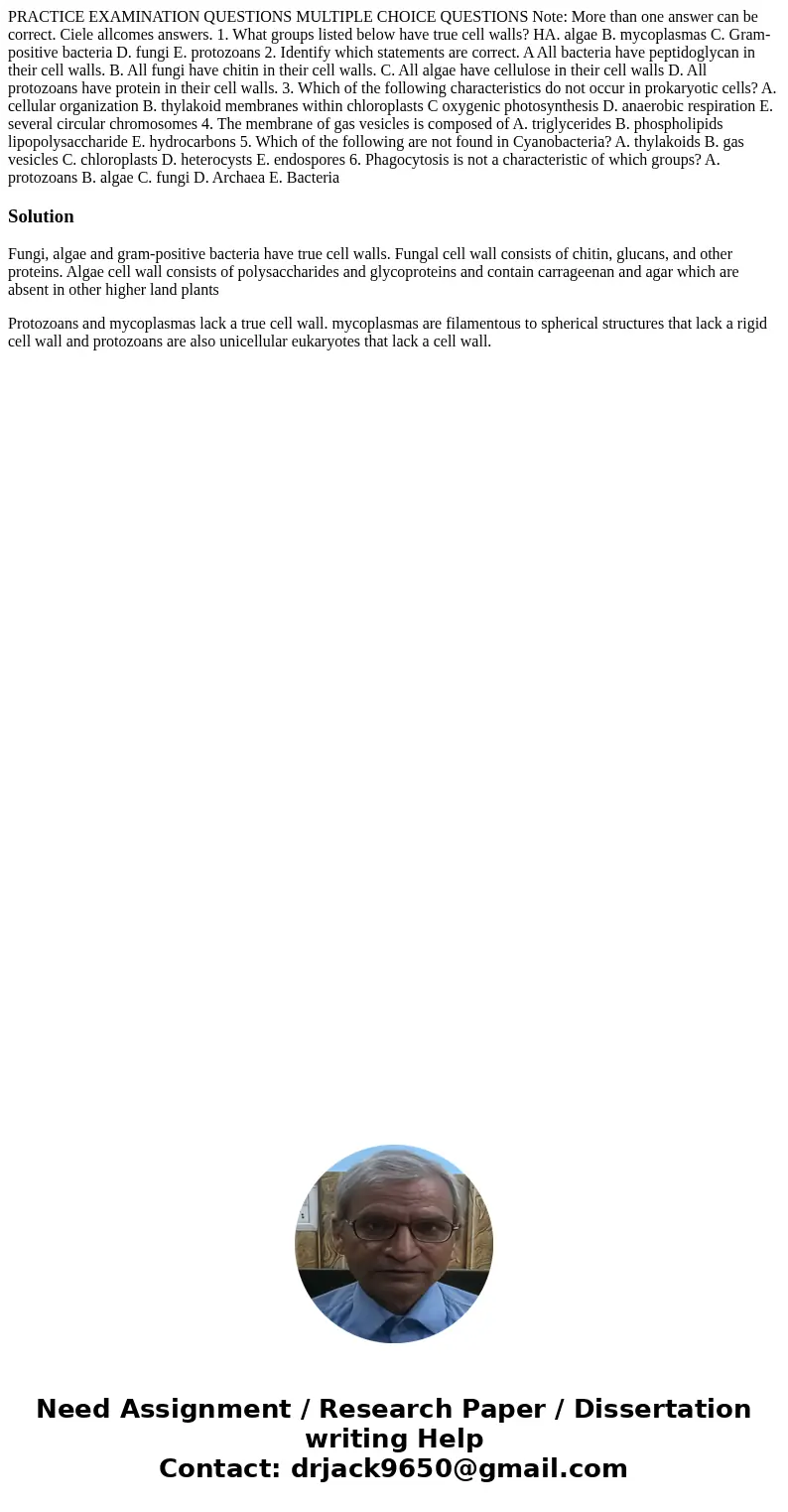PRACTICE EXAMINATION QUESTIONS MULTIPLE CHOICE QUESTIONS Not
PRACTICE EXAMINATION QUESTIONS MULTIPLE CHOICE QUESTIONS Note: More than one answer can be correct. Ciele allcomes answers. 1. What groups listed below have true cell walls? HA. algae B. mycoplasmas C. Gram-positive bacteria D. fungi E. protozoans 2. Identify which statements are correct. A All bacteria have peptidoglycan in their cell walls. B. All fungi have chitin in their cell walls. C. All algae have cellulose in their cell walls D. All protozoans have protein in their cell walls. 3. Which of the following characteristics do not occur in prokaryotic cells? A. cellular organization B. thylakoid membranes within chloroplasts C oxygenic photosynthesis D. anaerobic respiration E. several circular chromosomes 4. The membrane of gas vesicles is composed of A. triglycerides B. phospholipids lipopolysaccharide E. hydrocarbons 5. Which of the following are not found in Cyanobacteria? A. thylakoids B. gas vesicles C. chloroplasts D. heterocysts E. endospores 6. Phagocytosis is not a characteristic of which groups? A. protozoans B. algae C. fungi D. Archaea E. Bacteria 
Solution
Fungi, algae and gram-positive bacteria have true cell walls. Fungal cell wall consists of chitin, glucans, and other proteins. Algae cell wall consists of polysaccharides and glycoproteins and contain carrageenan and agar which are absent in other higher land plants
Protozoans and mycoplasmas lack a true cell wall. mycoplasmas are filamentous to spherical structures that lack a rigid cell wall and protozoans are also unicellular eukaryotes that lack a cell wall.

 Homework Sourse
Homework Sourse